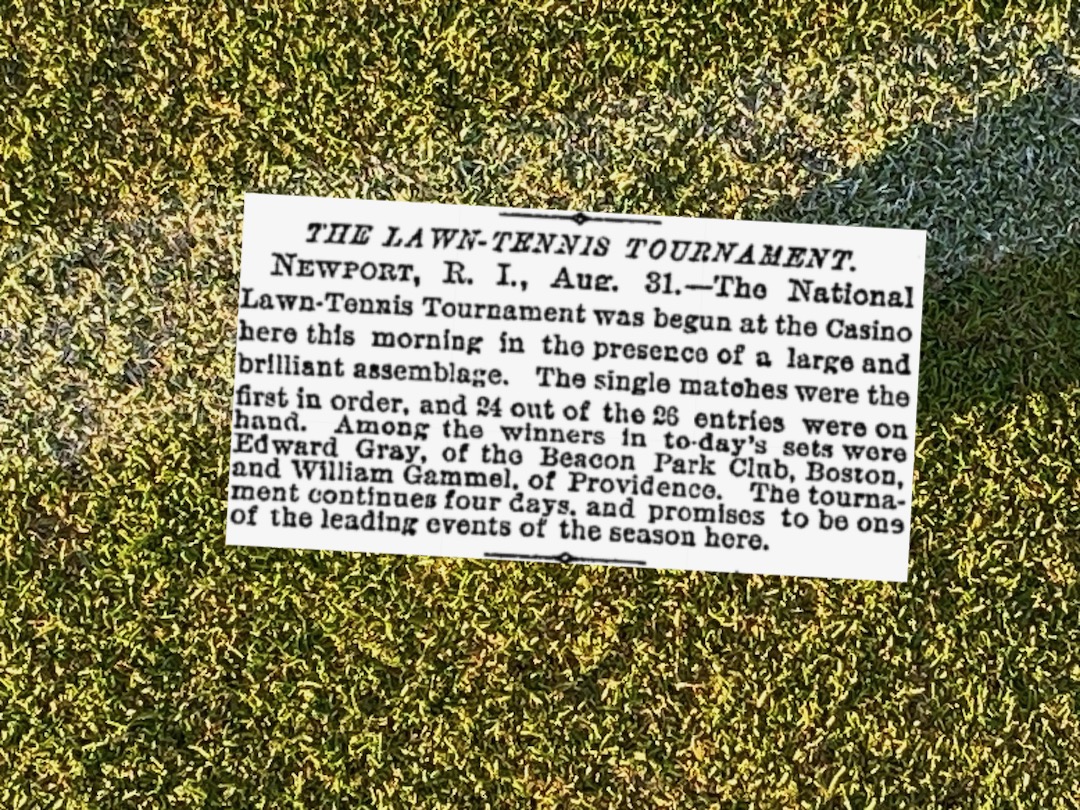This seems like a good time to inject a topic that is not in the ITF Rules of Tennis, but nevertheless is apparently debated from time to time. We have recently discussed the fact that if a service clips the net cord and falls in, then a let is played. On all other shots, a net-cord strike is basically tough luck. Once again… wait for it… we really don’t know why the distinction even exists.
This also seems like a good tome to reiterate my love for the National Library of Australia Trove resource, which contains a large archive of newspapers. The Australian has media diligently followed and reported on the prominent players of their time. Additionally, those sources meticulously recorded the instructions the Australian delegates were to convey to the annual ITF meetings, along with the results of each meeting.
From the Australian media, I discern that disallowing the net-cord shots was a recurring proposed rule modification throughout the early 1900’s. An interesting editorial on this topic was published by the Evening News (Sydney) in 1910 on behalf Stanley Norwood Doust who was described as a “Well-known Sydney Player, who is now abroad.” Doust would go on to captain the Australian Davis Cup team in 1913. His best tournament result was reaching the 1909 Wimbledon Gentlemen’s doubles finals.
The editorial written published for Doust was in apparent response to the ongoing sentiment to eliminate the net-cord shot. Doust comes down very firmly on the side of no modification to the rules.
Like so much of the other stories at the time, the writing is poignant and elegant. One of the first observations is that net-cord shots seem to always come at critical points in the match which is likely what prompted the outcry for the altercation of the rules in the first place. Apparently no one wanted to see a tennis match decided by lucky breaks.
Two rule modifications were being promoted in response to a net-cord shot. The first was to play the ball as a let. The second was that the receiver of the ball should be awarded the choice of whether to continue playing the point or if the let should be called. Doust’s argument against the first point was that it would unnecessarily lengthen matches. His opposition to the second alteration centered on the challenges of making an instantaneous call and that arguments would almost always be sparked.
Doust also expounded on the mechanics of strokes, asserting that players that hit over the ball would generally generate more net-cord shots than players who hit under the ball. The contention was that what we would now call topspin shots were superior to shots that were sliced, therefore players who hit with more topspin had essentially earned more net cord shots.
Obviously the rule has never changed. I doubt that this editorial had anything to do with the outcome of the debate. It does provide a fascinating snap shot into how players were taking a critical look at the rules over a century ago. It’s fascinating stuff.
- Trove, National Library of Australia, viewed April 22, 2020.
- “Lawn Tennis. Net Cord Stroke. Suggested Alteration,” Stanley Norwood Doust, Evening News, Sydney Australia, March 18, 1910.



